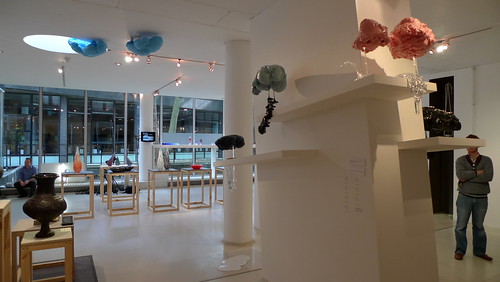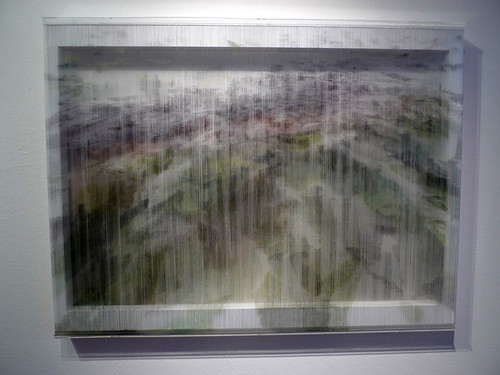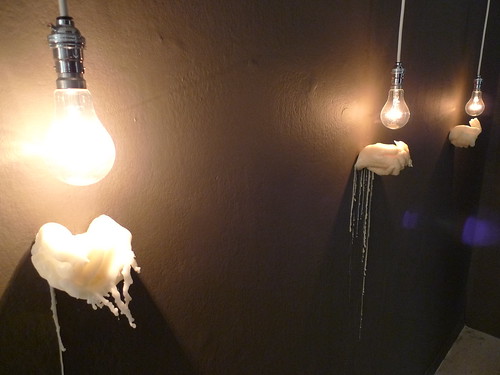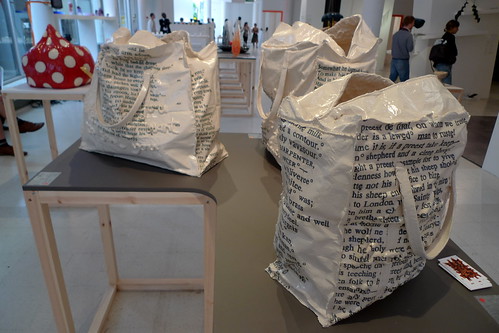
1. Can you talk a bit about how your art work begin? For instance, where do you start on pursuing this idea of 'space poetics'?
I have always been fascinated by the environment around me, how objects interact with each other, specifically buildings and the spaces they create. I was very lucky to study in three very different types of area, starting in industrial Yorkshire, going on to the classically inspired surroundings of Edinburgh and finally ending up in London’s metropolis. Each place has a very different feel and has inspired different bodies of work but the core enquiry remains the same, the resonance of object and space.

Works in progress in studio - from the artist's flickr page © Zachary Eastwood-Bloom
2. Are there any particular influences throughout your artistic career, e.g. other artists, certain types of music, certain social phenomenon etc.?
The ceramicist Martin Smith was a huge influence from the age of 18 and 10 years later he became one of my tutors at the RCA, he has absolute control over what can be a material with will of its own. Artists such as Richard Serra, Richard Deacon, Anish Kapoor and Peter Randall-Page have a monumental and yet investigative quality in their pieces which works beautifully. The scale of my work is something I would like to develop in the next few years.
I
have never really considered music a direct influence upon my work until recently when I did a video piece with my brother who composes music, but music so often conveys some of the atmosphere I am trying to convey in my work, I’m think of artists such as Johann Johannsson and Steve Reich.
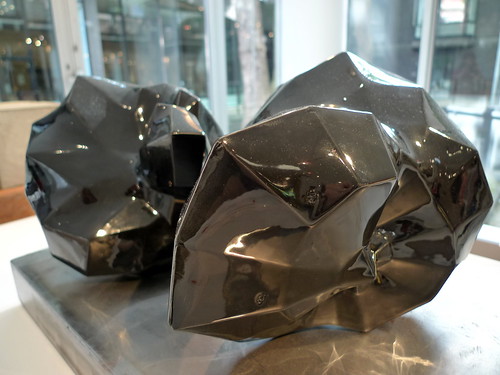
Black Folds at the RCA show 2010
3. Your works are partly materialised by employing digital technology, and they reflect this on their outlooks. How do you think about the relationship between technology and art? Do you think it helps you to bring out the message you want to say or do you sometimes struggle to find a way to interpret your feelings through technology?
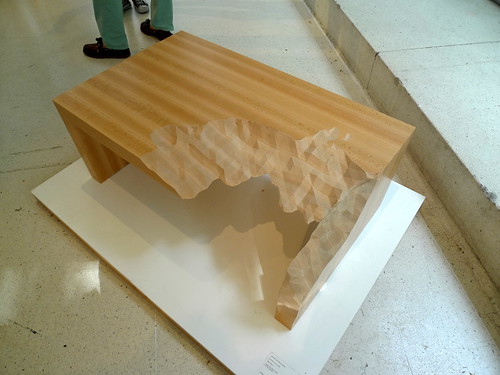
Information Ate My Table at the RCA show 2010
"Making Of" video from the artist's flickr page © Zachary Eastwood-Bloom
The use of digital processes came about because I was looking into ideas of the real and the virtual and this hybridised space that is created somewhere between each idea, a space that we increasingly exist in. The digital processes I have used are used by designers on a daily basis but rarely by sculptors so this is a fairly fresh area of investigation, in some ways it feels as if there is a slight fear or mistrust of the digital in a sculptural context, there are artists such as Antony Gormley and Annie Cattrell who do explore digital process, but it is a minority. The relationship between art and technology is interesting because with each new technology a new context for works becomes available, how long will it be before artists sell works through the iPhone app store? For me employing digital technology works perfectly, I can be exacting and experimental at the same time.
4. Many established artists nowadays do not 'make' works by themselves any more and instead hire assistants to do that for them. Would you consider working with other people to create 'your' art? And do you think it is a new approach of art which is viable in future?
I have to work with others to make my work, I don’t yet have the luxury of owning my own rapid  prototyping machine or CNC milling machine. I have done a lot of work at Object studios
prototyping machine or CNC milling machine. I have done a lot of work at Object studios
in north London working on milling aesthetics and making models, Information Ate My Table was made there as well as the models for the Folding Space series. For 21st Century Landscape Triptych it took four people to make each component because the material cured extremely quickly, so I envision working with assistants in the future. I think there can be a stage where your ambition  outweighs you abilities but I wouldn’t like to get to the point like Jeff Koons or Damien Hirst where you almost become a manager of your studio and not get your hands dirty. The managerial approach to art production works for artist who are in high demand but not necessarily for every artist.
outweighs you abilities but I wouldn’t like to get to the point like Jeff Koons or Damien Hirst where you almost become a manager of your studio and not get your hands dirty. The managerial approach to art production works for artist who are in high demand but not necessarily for every artist.

Echo Shift (Bronze) at the RCA Show 2010
5. Do you have any future plans? What's next?
At the moment I am moving studio so as soon as I have the space I will be continuing this body of work. Information Ate My Table will be exhibited during design week in September and I am currently discussing future exhibitions with a couple of galleries for later this year and next year. I would love to get some public art and architectural commissions and make some larger monumental pieces.
*****
Thanks Zac for spending the time for the interview and sharing his production images with us.
His official page - http://www.zacharyeastwood-bloom.co.uk
